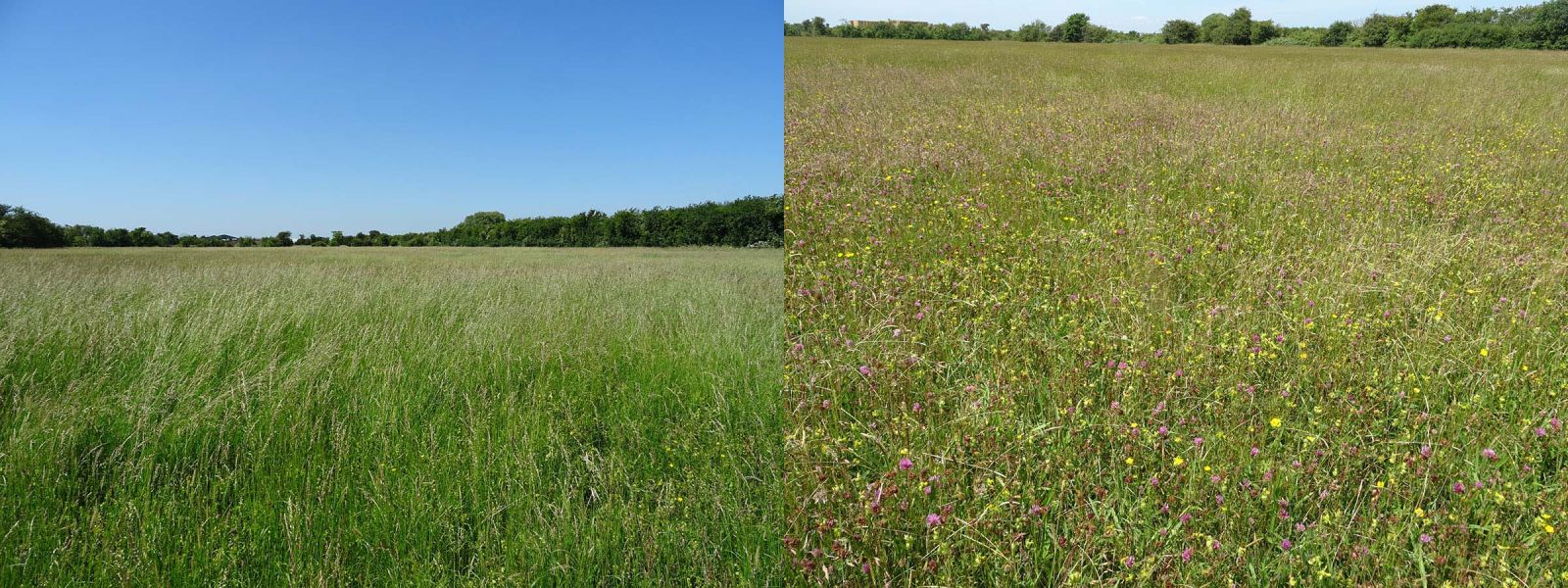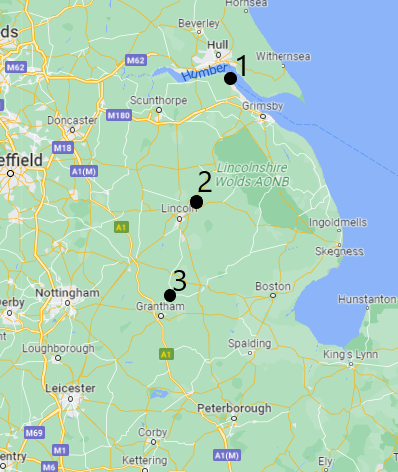Lilianna Witkowska-Wawer
Nature Reserves Officer, Lincolnshire Wildlife Trust
Lincolnshire Wildlife Trust manages over 100 nature reserves covering nearly 3,800 hectares. Some of the reserves include floodplain meadow habitats in different conditions – from very rich flowery grasslands to quite floristically poor grassy swards but with a potential to became floristically rich if managed properly.
In 2017 the Floodplain Meadows Partnership (Dr. Irina Tatarenko and Dr. Mike Dodd) surveyed five nature reserves under floodplain meadow restoration in different stages – from those created on arable fields to nearly fully restored meadows. In 2022 the surveys have been repeated by Dr. Irina Tatarenko. This article is focused on three of the reserves.
Dawson City Clay Pits SSSI consists of four meadows and former clay pits located next to the River Humber. Originally managed as heavily cattle-grazed pastures and reedbeds (until 1987) it has undergone a lengthy restoration management towards species-rich hay meadows. The grasslands are subject to partial winter flooding and are used by wintering waders and breeding wildfowl. Since 1994 the management included summer grazing with cattle and winter grazing with sheep but there was a serious problem with weeds, mainly creeping thistle. In 2000 hay cutting was introduced and since then the grasslands have been cut annually after 15 July and aftermath grazed. Since 2014 a programme of spreading species-rich hay has been part of Higher Level Stewardship grassland restoration. Hay has been collected from the small species-rich areas within the site and spread on the fields under restoration. A lot of yellow rattle present in hay has been acting as a catalyst for colonisation by other species by suppressing vigorous, coarse grasses. After leaving hay thinly spread on cut grassland for 1-3 weeks, sheep and cattle have been allowed to trample and graze the hay. A recent survey has indicated that spreading species-rich hay is helping to increase plant diversity. Most of the grassland has responded well to this management – the presence of flowering plants has increased substantially over five years, the botanical diversity in the plant community of the biggest field is similar to the best examples of MG4, Great Burnet - Meadow Foxtail grassland.
 Figure 1: Dawson City Clay Pits. Left, 2015. Right, same field in 2022.
Figure 1: Dawson City Clay Pits. Left, 2015. Right, same field in 2022.
Pickering’s Meadow includes four small meadows in different stages of restoration – from well-established grasslands to those recently recreated from arable. The meadow is located next to the Dunholme Beck, with a seasonal ditch crossing the middle of the site which floods occasionally in places.
The reserve originally consisted of two meadows, gifted to the Trust in 1984, previously managed by cutting for hay and aftermath grazing by horses. The sward was very short with large clumps of docks, thistles and coarse grasses. In the early 1990’s horse grazing was replaced with sheep grazing and the meadows were entered into the Countryside Stewardship Scheme and managed by cutting, aftermath grazing and weed control. The smaller meadow is now floristically rich with great burnet, meadowsweet, meadow vetchling and other forbs with a large population of adder’s tongue fern. The bigger meadow was adversely affected by an accidental spraying in 2012 that resulted in a lossof species representing three plant families: Rosaceae, Fabaceae and Asteraceae. However there is a good sign of recovery as these plant families are currently well represented.
Two adjacent arable fields were purchased by the Trust in 2008 and restored to species-rich meadows by establishing a grassy sward of Italian ryegrass in the first couple of years and cutting to reduce the nutrient level, and then sowing a seed mix from local sources, cutting and grazing and applying green hay from the nearby SSSI meadows. The vegetation is now similar to typical and dry sub-communities of MG4 grassland. Dogs off leads cause a problem along the public footpath that crosses through the fields, particularly when livestock are present; they also adversely affect the quality of the hay crop.
 Figure 3: Moor Closes. Left, meadowsweet abundant in 2009. Right, same field with more diverse species
Figure 3: Moor Closes. Left, meadowsweet abundant in 2009. Right, same field with more diverse species
 Figure 4: Map showing reserves location in Lincolnshire.
Figure 4: Map showing reserves location in Lincolnshire.
1. Dawson City Clay Pits
2. Pickering's Meadow
3. Moor Closes